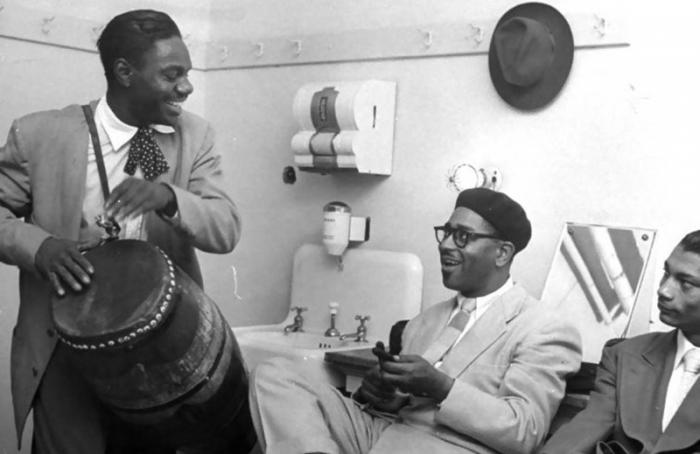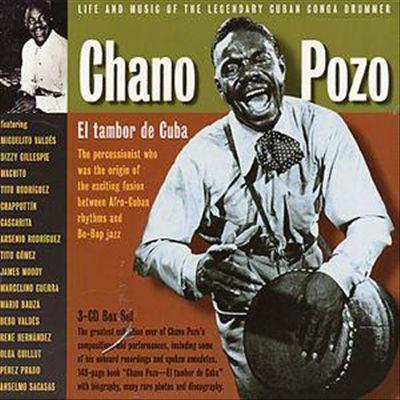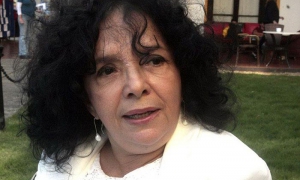
Luciano, Chano, Pozo González was born 100 years ago, on January 7, 1915 and the world of afro-Cuban music is celebrating the centenary of this paradigm of conga and rumba, one of the greatest legends of Cuban percussion.
Chano’s achievements were great, at a time when many percussion instruments were dismissed and prohibited. In 1940, Chano was already established in the magnificent Tropicana cabaret, in the production Congo pantera, together with Rita Montaner, Mongo Santamaría, Bola de Nieve, and the Ballet RussedeMonte Carlo.
He had already achieved fame as a dancer and tambour player in various carnival troupes. He was member of the Hermanos Palau orchestra.The Cuban radio chainRHC Cadena Azul opened its doors to him, and there he founded Conjunto Azul with trumpeter Félix Chapottín.
With the conga drum over his shoulder, Chano played, danced and performed songs in Lucumí (a Yoruba dialect) and Abakuá. Chano’s drumming and songs in Lucumí can be heard in some of his recordings.
He was a renowned personality in Havana, known to have had 100, generously perfumed, 100 percent white cotton-drill suits.
Chano’s big moment came in 1947, when he was invited to perform in New York – the Mecca of music concerts.
He danced with Katherine Dunham and Mario Bauzá’s company who contracted none other than Dizzy Gillespie’s orchestra. There he introduced the tumbadora (large conga drum) to jazz.

Gillespie and Chano toured the United States and Europe. Chano brought Cuban rhythms to the big band, sparking the so-called “Cubop” (Cuban variant of bepop.) On September 29, 1947, Chano played at Carnegie Hall, where he performed Afro-Cuban Drum Suite: later cementing his fame in a concert with Gillespie held on December 25, in The Town Hall.
Researcher Luc Delannoy describes the performance: “The percussionist crouched down, and like a tempest in the center of the stage, beat the many-voiced drum with his calloused hands. He stands up, knocks over his chair, performs a few dance steps, returns to the orchestra, looks at the public, bewitching them, reciting texts and phrases in Yoruba learned from his African ancestors. It was like a celebration, an orgy of sound from the heart of Caribbean music from the tropics.”
Gillespie, watching this supreme performance exclaimed, “He’s the greatest tambour player I have ever heard.”
Chano-Gillespie created one of the most emblematic works of Latin jazz or Afro-Cuban music: “Manteca,” inspired by Chano, who in addition to being an instrumentalist was also an excellent composer - a rare talent. “Manteca” is considered to be the best fusion of jazz and Afro-Cuban rhythms.

“Chano,” wrote Fernando Ortiz a year after the tambour player’s passing, “managed to transplant his rhythms from West African tribes. Chano Pozo’s grandparents, but also all of Cuba speak through his tambour… We must remember his name so that it isn’t lost like that of so many anonymous artists who for centuries have kept the art of music alive with their genuine cubanía.”
Chano lived life at full speed, dying on December 3, 1948 at 33 years of age. He was murdered in the Río Café and Lounge, on the corner of 111th Street andLennox Avenue, in Harlem. His death moved the drumming world, and so the legend began.
There are no images on film to enhance the myth, but there are classic rumba and Latin jazz compositions: “Nague,” “Blen blen blen,” “Zarabanda.” He also left recordings of “Tin tin deo,” “Cubana bop,” (Afro-Cuban Jazz Suite), “Cool Breeze.”
Chano escaped poverty and reached the height of musical fame, leaving behind a powerful legacy. He put Afro-Cuban rhythms in the spot-light and is today a staple of Cuban music.






